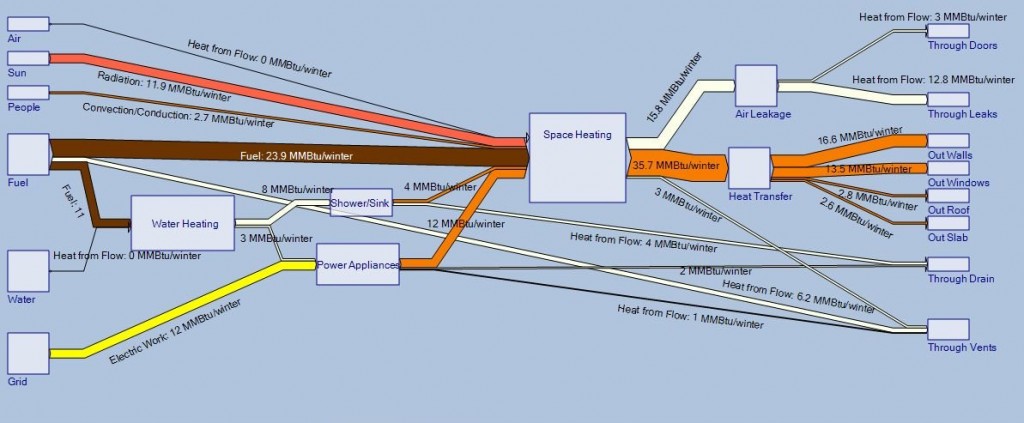
If you’re contemplating an energy upgrade to your house or commercial building, perhaps someone has mentioned the concept of a building simulation, or doing an energy model. Such a process has been part of the commercial HVAC world for some time now.
As the name suggests, a building simulation involves the use of a computer to simulate the building’s energy performance. The goal of performing a simulation is not only to predict how much energy a building will use over the course of a year, but also to compare alterrnative designs. We can also look at some measures of comfort within the building.
With all this data, it’s clear that a simulation can be very powerful for helping make decisions. As you might guess, authorities that regulate energy compliance as well as those that give out rebates want to see this kind of analysis done to make sure they are spending our money wisely.
The ‘sankey’ diagram above illustrates the complexity of the energy flows into and out of a typical house. Based upon a description of the building input by the user, the building simulation software calculates all the energy flows into and out of the building. Not only does the software model the building envelope, but it models the interactions of people, infiltration, and even exotic things like trombe walls. After doing all this, the software has to predict how the building equipment will perform. Everything from furnace efficiency, daylighting controls, through daylighting controls is simulated on a 24hour/365day basis.
The pay-off is not to predict the exact energy use of any one particular house, but instead to look at alternate ways of building, different equipment, and even alternate control strategies.
Over the next blog postings, I’ll keep you in the loop on our progress.
Executive Summary:
Financial analyst is to Spreadsheet AS Engineer is to Energy Modelling
